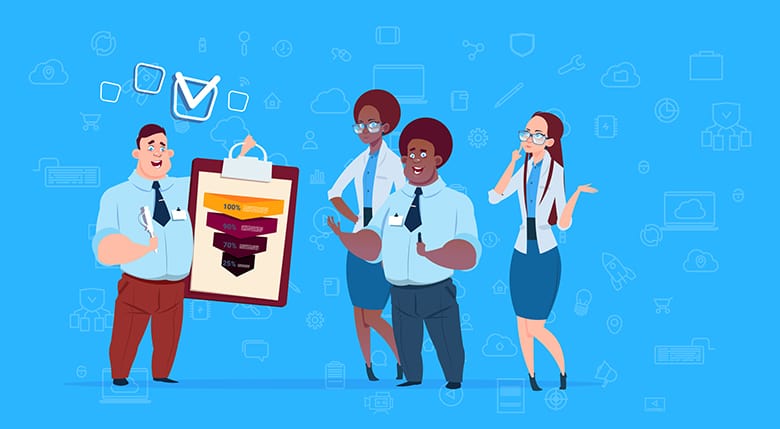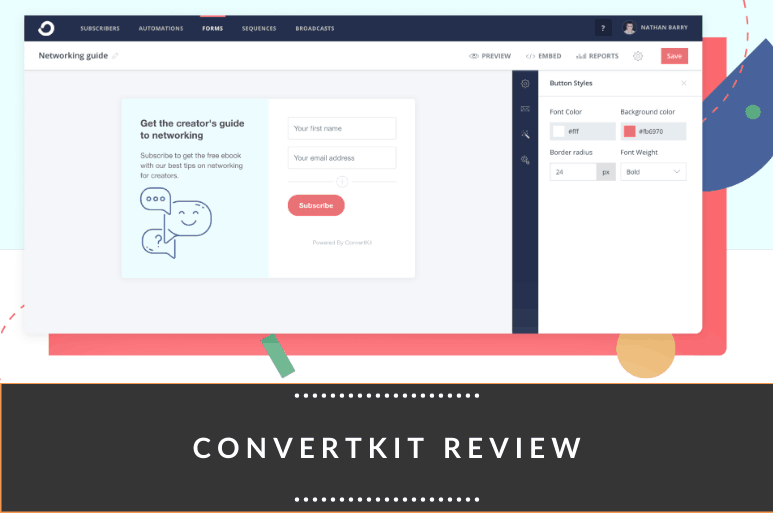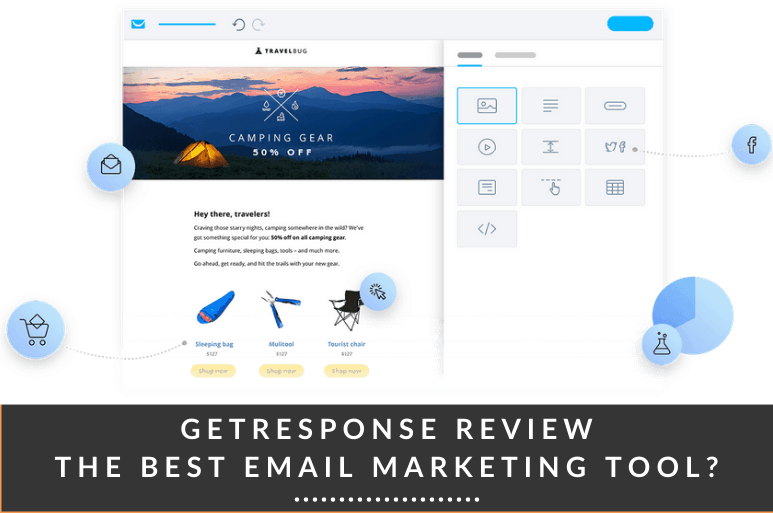I remember the days when I was just starting my online business. The exhilaration and thrill of establishing myself in the competitive digital landscape is something I’ll never forget.
But there were days when I felt like I was being pulled in different directions trying to keep up with my customers. Plus, I didn't see steady growth in customers, and I wasn't sure whether my marketing messages were producing the right results.
But that was before I invested in building effective email marketing strategies.
While email wasn’t a new form of communication for me, my problem was that I just hadn’t understood how to tap into its potential.
I can proudly say learning email marketing best practices has made a world of difference to my campaigns. I'm able to reach my target audience and keep their interests. Plus, I can effortlessly target different consumers at different times and tailor my messages to match their unique needs and demands. More importantly, I know which emails are hitting it out of the ballpark, bringing in more leads and revenue.
Now, I can say that when marketers claim that email has the highest conversion rate of all marketing channels AND it delivers the best ROI, they’re 100% correct.
So if you’re new to the world of email marketing or your email marketing story sounds a lot like mine used to, you’ve come to the right place.
This is a beginner’s guide for everyone who wants to learn the ABCs of email marketing – newcomers as well as email marketers desperate to tweak their current campaigns. It’s full of great email marketing tips that can help align your marketing efforts with your customer’s needs and generate better results.
So without wasting any more time on the intro or reasons why you need to invest in email marketing, it’s time to learn how to do email marketing right.
But first, let’s all get on the same page.
What Is an Email Marketing Campaign?
Email marketing is a way for businesses to reach their audience via email. You can use it to send mass messages to everyone, including people interested in your brand (potential customers) and those already interacting with your brand (current customers).
But you must understand that the concept behind email marketing is permission marketing. So you must obtain the permission of the recipient before sending any messages.
So what defines a successful email marketing campaign?
It’s an email campaign that encourages recipients to open emails and take action. So when done right, you should see an increase in brand awareness, engagement, leads, sales, and revenue.
I bet you’re dreaming about all this for your brand!
So let’s dive straight into the essential steps that will ensure you create and run a successful email marketing campaign.
1. Populate Your List With Invested Subscribers
An email list is one of the most important elements of a successful email marketing campaign. But just any ol’ list of email subscribers won’t do.
You need to start your campaign by collecting email addresses from people who have expressed an interest in your brand and want to receive marketing communications from you. An active list of subscribers is likely to generate higher open rates and click through rates.
So what tactics can you use to build your email list?
Simple.
Step 1: Present an amazing incentive email recipients can’t ignore.
Create something of value (a lead magnet) that your target audience would be attracted to. For instance, some powerful ways to entice people to offer their email addresses include:
- Access to additional in-depth blog content
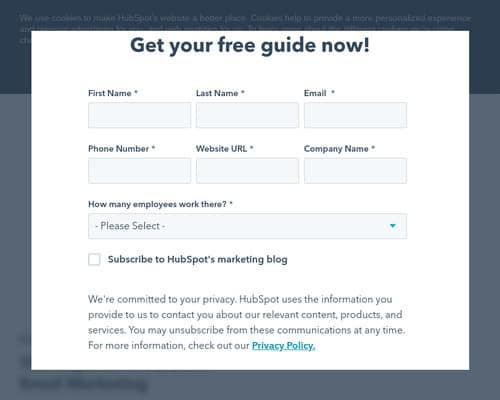
- Discount coupons on the first order
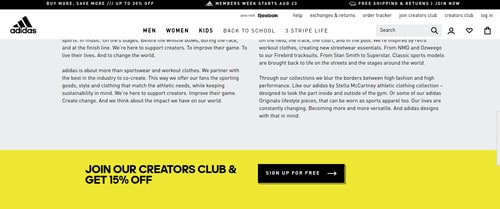
- Create urgency by offering a discount code for a limited time only
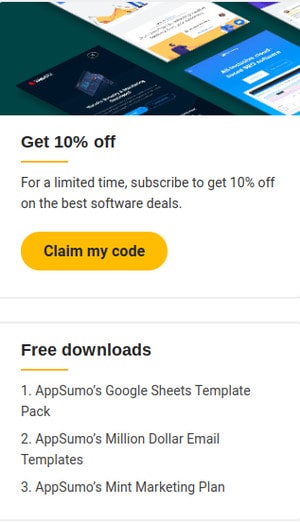
- Free trial
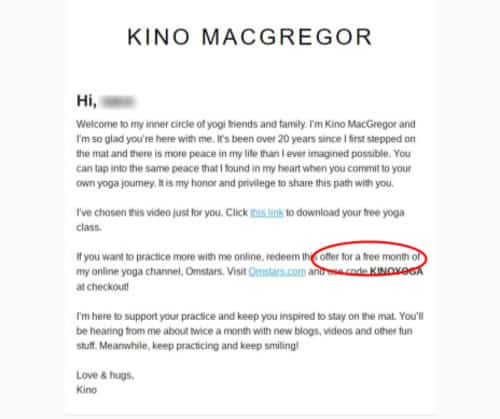
- Free shipping
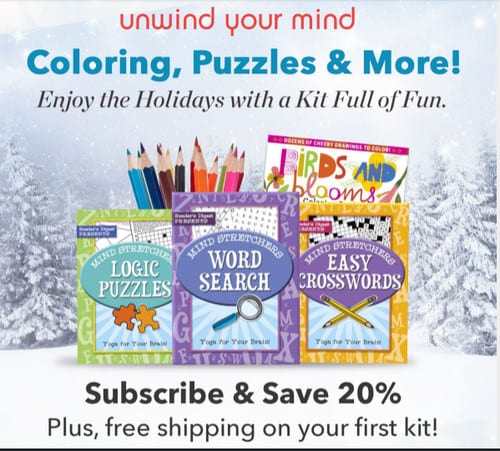
Step 2: Make it easy for people to join your list.
Create simple opportunities for people to opt into your email list. Remember, keep opt-in forms simple so people don’t think twice about signing up.
Now place your subscribe form in multiple locations, such as:
- Top sidebar – This positions your opt-in above the fold in the uppermost space of the web page where it can get maximum visibility.
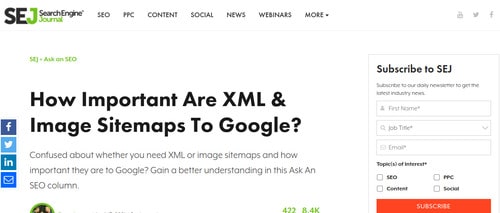
- Sticky floating header or footer bar – the opt-in remains in view at the top or bottom of the page no matter how far the reader scrolls
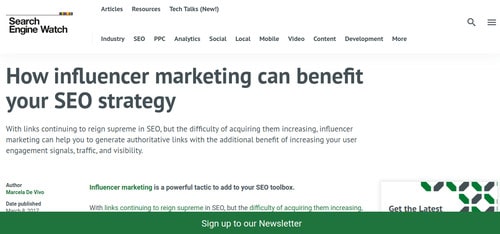
- Slide-in pop-up when a reader scrolls through a certain portion of the page
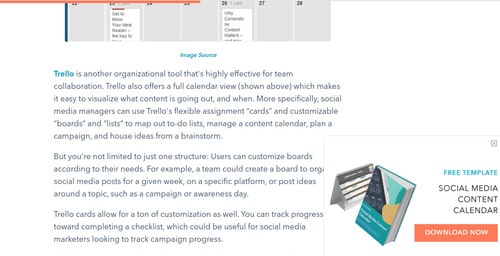
- At the end of a blog post
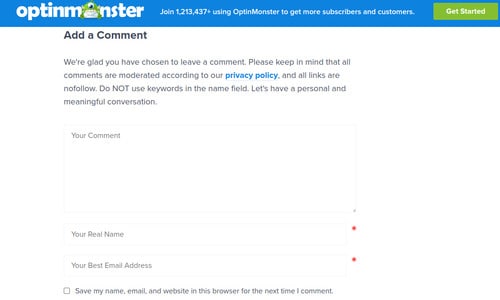
- During online chat
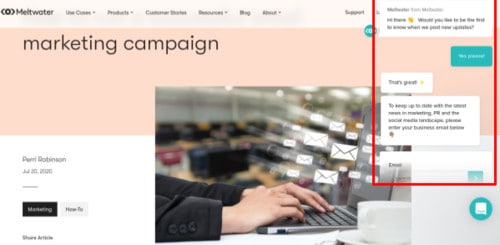
- Exit intent pop-up just before a visitor leaves your site
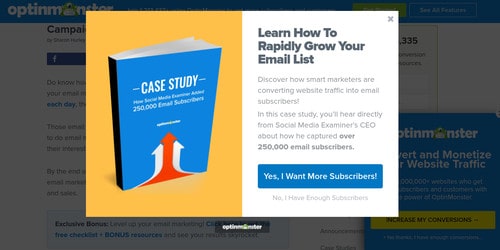
- Social media profiles
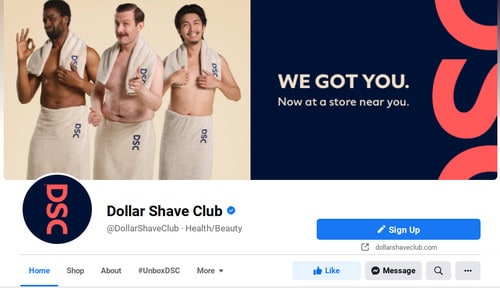
I think you get the idea.
2. Segment Your Email List
Now that you’ve captured email addresses and built your list, it’s time to develop communications that align with each subscriber.
The best way to do that is to break down your email list into small groups or segments.
Segmentation allows you to define and understand your target audiences better – and, of course, make more money. Marketers claim segmented campaigns can drive sales and increase email revenue by nearly 760%.
Rather than blasting your entire list with one generic message, you can send targeted emails with the right content to the right people at the right time. It’s the ideal way to market your brand more effectively.
So with a good approach, you can also increase open rates by 39%, lower your unsubscribe rate by 9.37%, and see a click through rate that is 100.95% higher than non-segmented email campaigns.
As you can see, a segmented email campaign can make a significant impact on your bottom line.
Alright, what are some ways you can segment your email list?
There are countless ways you can do that, but typical segments include:
Demographic Segmentation
Split up your subscribers into common differences, such as age, gender, marital status, education level, occupation, income, race, nationality, religion, etc.
You can gather subscriber data by asking them directly or from second-party and third-party data providers, such as marketing service providers, credit bureaus, or public records.
Since this type of information is relatively easy to obtain, demographic segmentation is the most popular form of segmentation used by marketers. Moreover, it can help personalize email content. But more on that later.
So if you sell a variety of products and services, you can identify which of your subscribers are more likely to benefit from each one. For instance, if you sell a sportswear line or men and women, you can send targeted content explicitly towards a specific demographic.
Outdoor Voices adds a simple subscription form at the bottom of their homepage to improve email segmentation efforts.
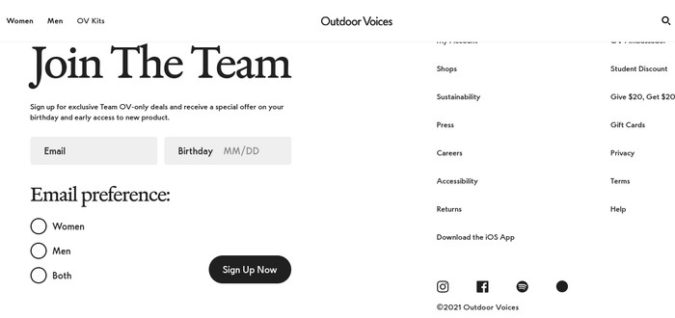
Geographic Segmentation
Segment your list depending upon where subscribers live using information such as country, state, or zip code. It’s an easy way for brands to connect and target customers residing in different locations.
For example, a clothing brand targeting subscribers in New Mexico is more likely to focus on clothing for warmer climates than for someone living in Canada.
But geographic segmentation allows you to overcome regional differences, such as language, interests, and culture.
Here’s an example of Amazon’s email newsletter for UAE subscribers.
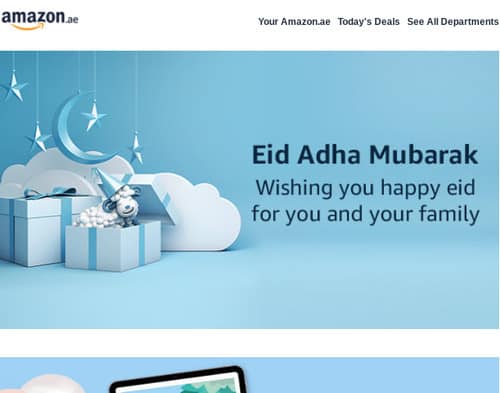
Behavioral Segmentation
Segment your list based on subscriber’s behaviors and interactions with your products, website, or app.
Marketers often collect this data from cookies, CRM software, or third-party datasets. This allows them to send content based on their interests or needs and ensures recipients engage better with your emails.
Common behaviors you can look at are:
- Online shopping habits
- Past purchases
- Actions taken on a site, such as how long visitors stay, previously searched items, content that interests them, what they click on, etc.
- What benefits are they looking for
- Customer loyalty level
Take a look at the email Sketcher sent after I spent some time searching for shoes in my size.
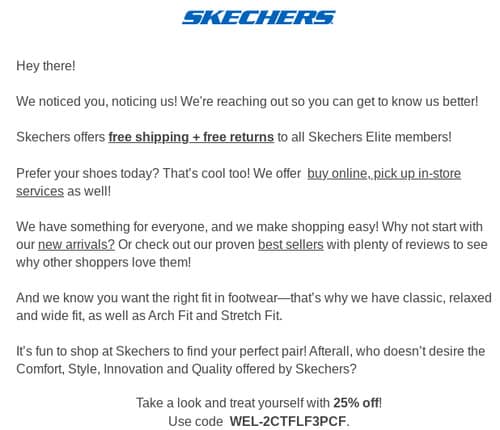
Segmentation Based On Subscriber’s Position In The Sales Funnel
You can send highly targeted emails depending on where a person is in your sales funnel.
As soon as someone signs up to your email list, they’ve entered the first phase. Right now, they’re interested in finding out more about your brand and probably not ready to buy yet. So the goal is to encourage new subscribers to explore more products and services. For instance, a free trial will allow them to understand how they can benefit from a purchase.
The goal of the second phase is to convert trial users into paid customers, while the third phase aims at encouraging paid subscribers to upgrade.
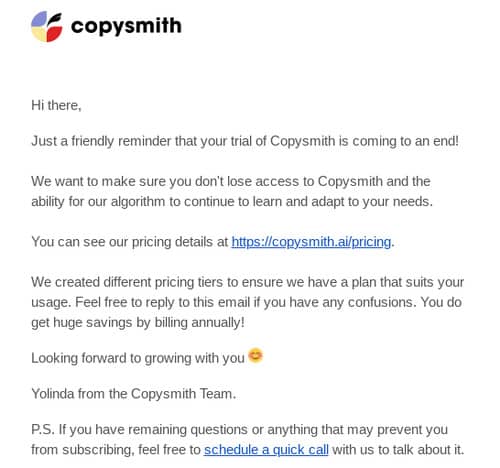
3. Establish Goals for Your Email Marketing Campaigns
Goals add purpose and direction to everything you do. You really can’t achieve much in life without them.
The same is true in the world of marketing.
So what do you want your email campaign to achieve? Remember, the goals you select will dictate the content of your marketing emails and the strategy you implement.
The most common email marketing goals are:
- Build brand awareness
- Increase website traffic
- Nurture leads
- Welcome new subscribers
- Enhance engagement
- Acquire customer feedback
- Increase customer loyalty and lifetime value
- Drive sales and ROI
Most businesses focus on growing or retaining their customer base. Where do you stand?
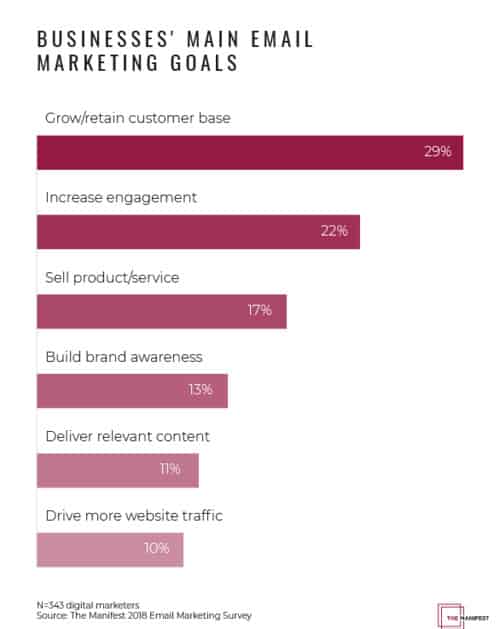
4. Understand the Different Type of Email Campaigns
Once you’ve determined marketing goals, it’s time to put them into action. The type of email you choose can help you achieve your objectives as well as match your subscriber’s preferences.
Here are some popular email campaign types you can use:
Welcome Email
Welcome emails help onboard new subscribers introduce them to products and services you offer.
Take a look at this welcome email from Content Marketing Institute. It instantly makes newcomers feel welcome by offering additional help, introducing them to social chat groups, notifying them of upcoming events, and providing links to other resources.
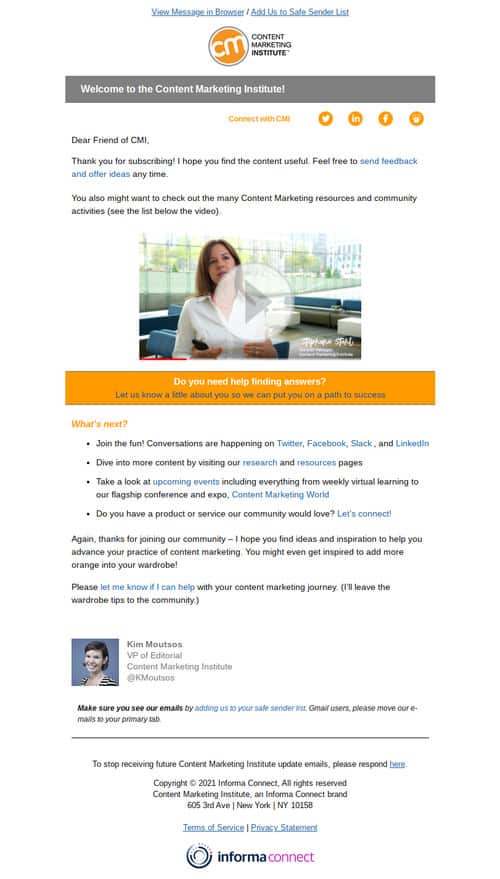
Averaging an open rate of 50%, every marketer should use this type of email.
Email Newsletters
Newsletters are non-promotional emails that businesses typically use to provide industry news, latest updates and products, blog roundups, etc. However, the content always revolves around a particular theme.
It’s the perfect type of email to send to people that are already familiar with your brand. And since they’re sent at regular intervals, newsletters help build trust and strong relationships with subscribers.
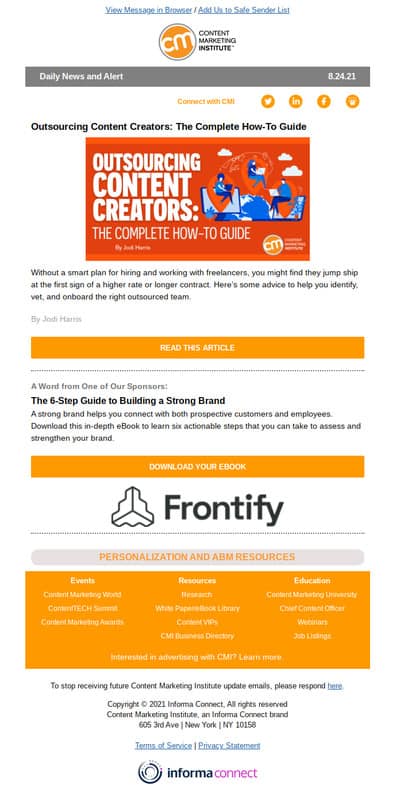
Promotional Emails
Companies use this type of marketing email to announce sales, special offers, product launches, etc.
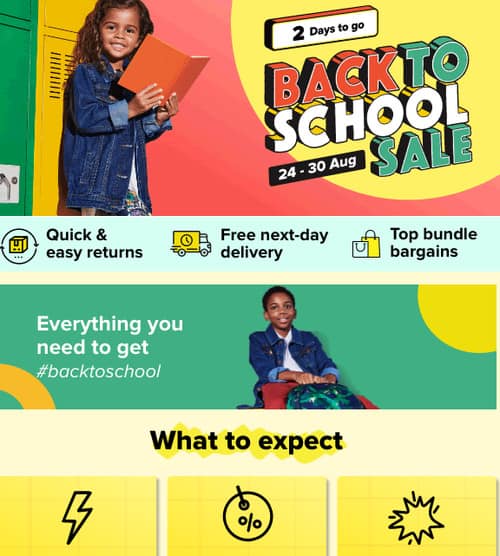
Transactional Emails
Once a transaction is complete, a company provides a summary of the purchase. Similar emails can be sent to confirm shipment.
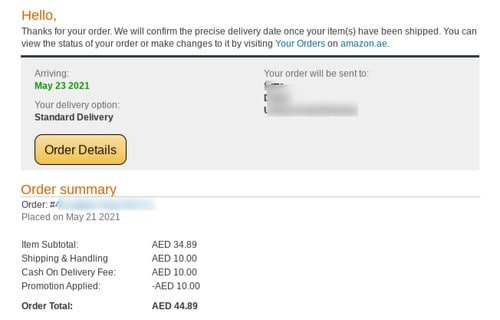
Post-purchase Emails
Emails like these continue to build relationships with customers even after a purchase. They can provide updates about shipments or even offer a discount on the next order.
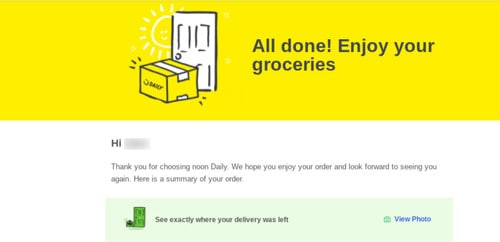
Cart Abandonment Emails
Reminding shoppers about items that were left in their cart can sway them towards a purchase. Some brands offer incentives like discounts and free shipping to persuade shoppers to return quickly.
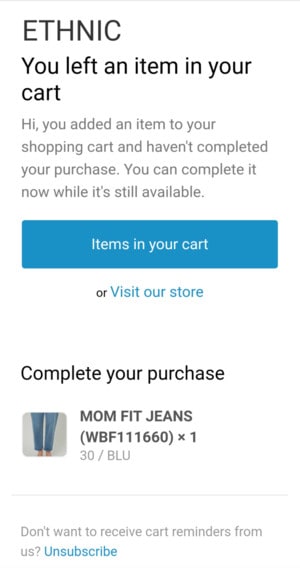
Invitation Emails
This is a great way for companies that organize events, webinars, workshops, and seminars to stay in constant contact with participants and gather more.
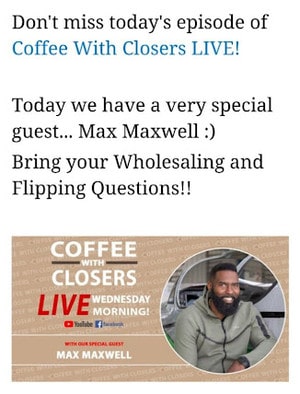
Re-engagement Emails
Re-engagement emails allow you to interact with inactive subscribers so that they may engage with you once again and go back to your website.
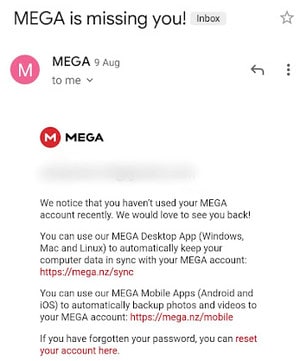
Holiday or Seasonal Emails
Brands often take advantage of special occasions and holidays through discounts and flash sales.
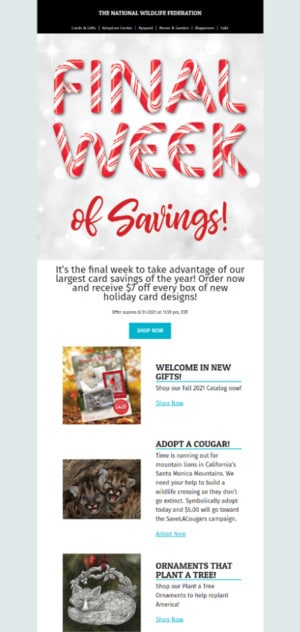
Review Request Emails
Gathering feedback from customers is a great way to keep communications alive. You could ask subscribers to offer product reviews or fill out surveys.
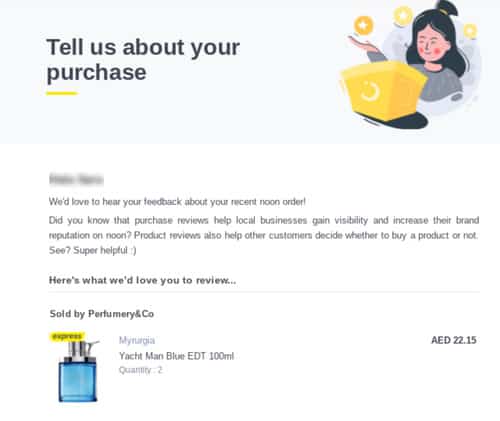
5. Plan Your Campaign's Emails and Followups
Trust me when I say segmenting your list and choosing the right type of email campaign won’t be of much use if you simply don’t send your email at the right time.
In marketing, timing is crucial. Sending an email at the wrong time can derail your email marketing campaign. For instance, you can’t expect to get a lot of opens in the middle of the night. More importantly, your email will simply get buried in the inbox by the next morning.
Since the success of your email campaign depends on the open rate, you need to know when your audience is more likely to open your emails.
So what time should you send emails?
Well, that differs from country to country and industry to industry.
But with the help of email sending platforms and email analytics tools like Litmus, you can optimize your sending times.
Generally speaking, send emails so that they are opened within the next hour or so. Research shows that over 20% of messages are opened within the first hour and nearly 30% in the second hour after being sent. But after that, the open rate drops.
Besides being timely, emails need to be consistently interesting, relevant, and valuable. Build a connected campaign by planning what content you intend to deliver to subscribers over the next few weeks or months.
Automated drip campaigns are great ways of following up on previous interactions. You can send relevant content at regular intervals to reignite communications.
For instance, a welcome drip campaign sends a series of onboarding emails based on the actions a new subscriber takes. On the other hand, a post-purchase drip can help re-engage customers with appropriate, relatable recommendations.
Similarly, email newsletters should highlight recent industry trends to remain relevant to readers. Furthermore, take the time to understand subscriber pain points so that you can address them and align content with their needs.
6. Select a Great Email Automation Platform
If you plan on acing email marketing, you’re going to need a marketing tool that lets you automate your campaigns.
So what should you be looking for?
Ideally, comprehensive email marketing platforms or email service providers can help with multiple email marketing tasks, such as designing an email, building an email list, segmentation, setting up drip campaigns, personalizing content, tracking and monitoring, A B testing, and much more.
But you need to consider what features you really need. For some businesses, budget constraints can become a limiting factor.
No matter what, make sure to invest in a marketing platform that integrates smoothly with other platforms you are currently using and is easy to onboard. You don’t want to end up wasting time and resources instead of working on growing your company.
What are some market leaders that you should look into?
But don’t limit your options to only the ones mentioned here. There are numerous others that you can try.
7. Choose the Right Email Template
Ah… now we get to the exciting part – creating an email. While this can be exhilarating for genuinely creative individuals. But if you’re anything like me, this step can become a speed bump for even the best of people.
A template can help you create an email. (Yes, you can take a sigh of relief.)
An email template is a preformatted, prewritten email that you can easily customize – often with drag and drop editors.
Since emails are used to send messages to your contacts every day, you must develop brand consistency within all your emails, especially email newsletters. A template can help you do that and ensure recipients become familiar with your brand.
So what makes a good template?
There are several basic aspects that you must include:
- subject line
- email copy
- call to action (CTA)
- brand assets such as the company's logo or trademark
- CAN-SPAM compatible footer
- Attractive images and hyperlinks are optional.
You can simply use the ready-made templates in the library of your email service provider. Or you can create a customized, unique one using a dedicated template builder.
Remember, you should tailor one for every occasion and purpose.
For example, a welcome email should have a short email copy and possibly a visually attractive layout to impress the subscriber in this first interaction.

On the other hand, lead nurture emails have a more descriptive copy and include several CTA buttons.
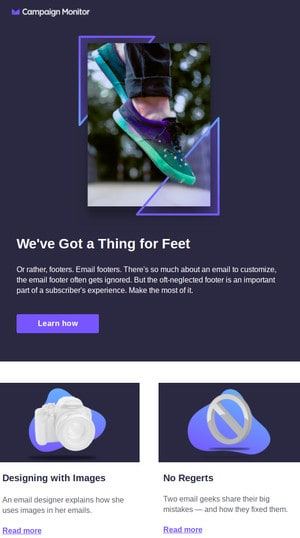
Transactional emails are short and to the point, highlighting details of a purchase. Some brands also use this opportunity to cross-sell other products.
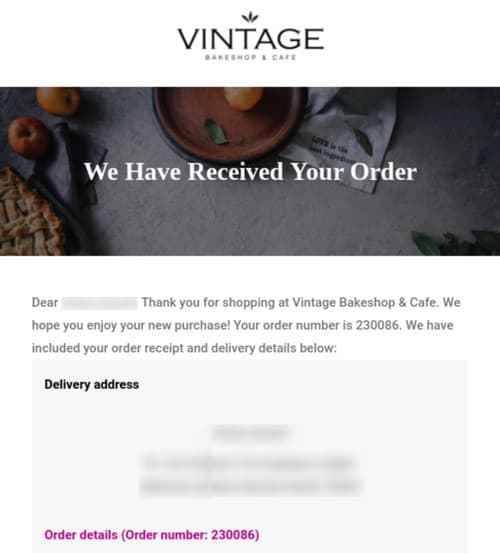
8. Craft Great Subject Lines
The subject line is the first thing recipients see even before they open your email. Research shows that 33% of people open an email based on its subject line.
So yeah, the subject line needs to stand out in the subscriber’s inbox and compel them to take action. And that is going to need a considerable amount of effort.
Need some pointers on how to go about doing that?
Effective subject lines are:
- Short – 6 to 10 words have the highest open rate.
- Intriguing yet relevant to the content inside the email.
- Personalized to grab the reader’s attention
- Create urgency by limiting the time frame
Here are a few examples of well-crafted subject lines:
- Register Today: Webinar for mastering influencer marketing
- In case you’re wondering (Name), the weekend sale starts tomorrow!
- (Name), final week of savings ends soon!
9. Write Enticing Preheader Content
You’ll notice a blurb of text right next to or beneath the subject line in the inbox. This is called a preheader.
Consider it as an extension of your email’s subject line. For example, if your subject line mentions a sale, the preview text can add more details.
So use this space to elaborate on the context of your email and persuade subscribers to open it and take action.
ESPs recommend using 50-100 characters. On mobile devices, this limit may be lower. But generally, a shorter preheader leaves some space around your email and helps it stand out in the inbox. Take a look at how short Gap Factory preheaders stand out more than others below.
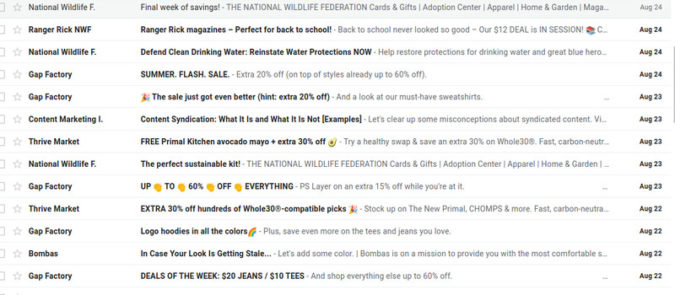
10. Understand the Importance of the Sender Name
Like the subject line, the sender’s name has a considerable influence on readers. 45% of subscribers say they’re likely to open an email because of who it’s from.
The good news is that you don’t need to change it every time.
But if you really want to boost open rates (by almost 35%), use a personal name instead of a general email address or company name. In fact, people respond better to emails from personalized accounts.
Look at how Yolinda from Copysmith does it. Instead of something impersonal like ‘company.com’ or no-reply, she uses her name in the ‘from’ section.
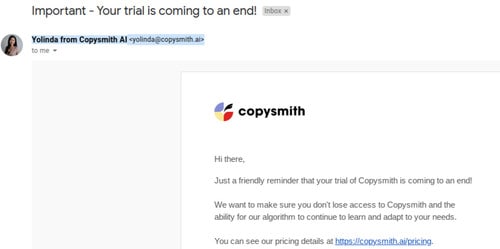
11. Write Engaging Content That Contributes to Campaign Goals
As I mentioned earlier, a successful email marketing campaign ensures content is always relevant to the reader through segmentation and personalization.
However, it’s equally important that content is relevant to your brand and helps meet your business goals.
Either way, you need compelling content to attract organic traffic to your website and enhance inbound marketing efforts.
Why do I hear crickets?
I know that sometimes, creating engaging content is easier said than done.
No problem. I’ve got a few ideas to help you keep the ball rolling.
- Product updates, upcoming releases, and discounts
- Industry news, updates, and trends
- Behind-the-scenes content, how-to guides, webinars, tutorials, product videos, etc.
- Company-related news such as press releases featuring your company, executive interviews, career opportunities, corporate events, etc.
- Value-driven content such as blogs, infographics, case studies, survey results, customer feedback, testimonials, FAQ, etc.
No matter what you plan to include in your email, a good email copy always needs to be concise, comprehensible, and drives the reader to take action.
12. Provide an Enticing Call To Action
The purpose of your email is to direct the person to click on the CTA. But now that readers are staring at it, they need to click on it.
What you need is an action-oriented CTA. However, in order to create one that converts, you need to focus on three essential aspects:
- The copy of the CTA. Aim to use the first person and phrase them so they don’t sound pushy or robotic.
- The color of the button. To stand out in the email, it needs to contrast with the background.
- The size of CTA buttons. Use appropriately sized buttons that work well on different devices. Today, 46% of emails are opened on mobile devices. So make sure the button is finger-friendly and is easily clickable on smaller screens.
13. Know What to Put in Your Email Footer
Even at the end of an email, you still want to:
- attract the reader’s attention.
- convey information about your brand
So what should you include?
Most companies sign off their emails with an email signature where they wish regards to the reader and say goodbye. It typically includes the sender’s name, business name, or a quote.
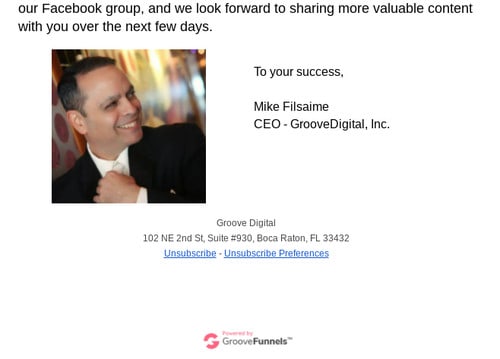
However, a well-designed footer should always have the following:
- Contact information, especially your company’s physical address
- Social media links
- Unsubscribe links
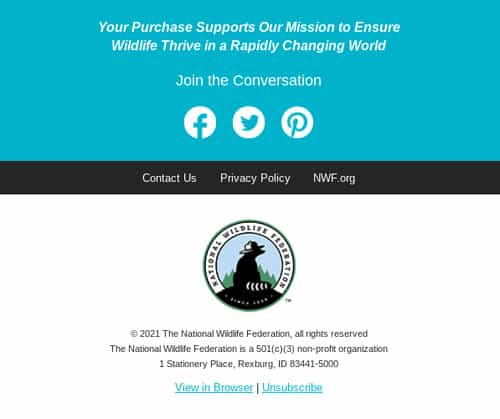
14. Make Sure Your Email Content Looks Great
Okay, so you know how to effectively create different parts of your email (body, CTA, and footer). Now it’s time to pull all your efforts in to create an aesthetically appealing layout and design.
27% of email marketers believe that simplified email designs facilitate creation and consumption. Hands down, a clean and beautiful email can drive engagement and conversions.
But dropping attention spans means you only have eight seconds to get your message across. Needless to say, people will be skimming your emails.
So what factors should you keep in mind when designing a template for an email?
Some best layout and design practices are:
- Use a color palette and font size that makes content easy to read
- Use a vertical layout
- Incorporate enough white space
- Break up content into scannable bite-sized sections, such as short paragraphs or bullet points
- Ensure the CTA stands out
- Limit the number of images
- Add buttons to share on social media
There are various ways to design an email. For instance, the inverted pyramid model structures an email for easy reading while guiding the reader toward the CTA.
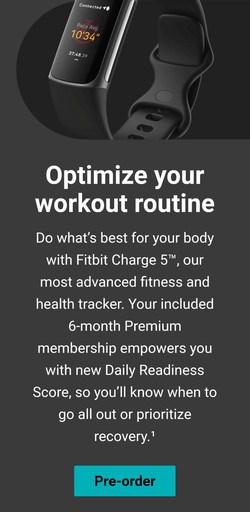
The one column email works great for mobile, allowing subscribers to navigate the email without getting overwhelmed.
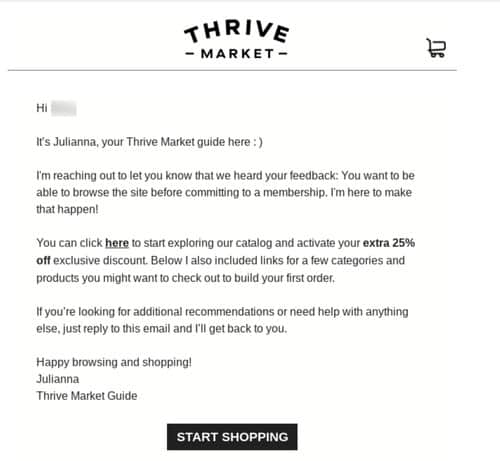
15. Personalize Your Emails as Much as Possible
Personalizing an email makes the message more relevant to the recipient, so they’re more likely to open and click on it. This helps strengthen customer experiences and boost conversions. In fact, personalized emails deliver 6x higher transaction rates.
As already mentioned, email list segmentation can make it easier to personalize your messages.
One of the easiest ways to personalize your email is to use the recipient's name. But I’m guessing you already knew that.
So what other ways can you do this?
Ask Questions
Simply ask your subscriber about their preferences so that you can send content accordingly.
Use Behavioral Triggers
Email marketing automation allows you to send content that aligns with the subscriber’s needs based on their actions. For example, when a person clicks on a link in your email about social media marketing, the next email you send should have links to resources about the topic.
Create Standouts
Find memorable ways to interact with your customer. Send a creative personalized message and discount:
- On their birthday
- On the anniversary of their customership
- To loyal customers who shop your brand the most
Suggest Relevant Products
By keeping track of a customer’s search or purchasing history, you can provide relevant recommendations to direct them towards another purchase.
This is Amazon reaching out to me as I search for a Kindle.
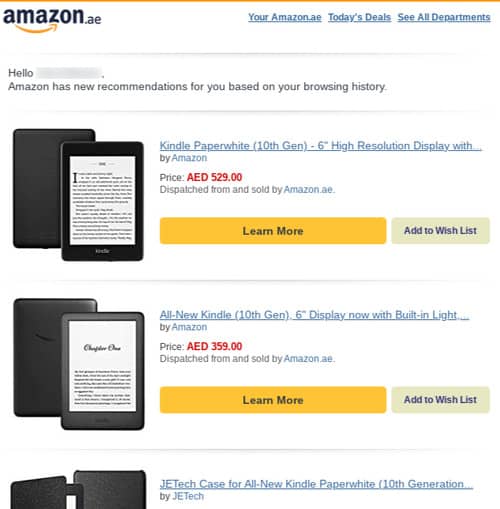
16. How to Avoid the Spam Folder
Agh! The dreaded spam folder! It’s one place you want to stay away from.
Though I could write an entire blog about this, I’ll just give you a few pointers on how to steer away from it.
- Avoid all caps in the subject line.
- Send only valuable content.
- Ask subscribers to whitelist your email address.
- Don’t go overboard with your email campaign and annoy subscribers. Limit your email blasts by asking about mailing preferences. Plan the time, content, and frequency accordingly.
- Avoid sending mass emails from a Gmail address.
- Avoid sending long attachments such as .exe or .swf files.
17. Use Autoresponders Smartly
Autoresponders are excellent cost-effective ways to send relevant messages to subscribers at different stages in the customer journey. It’s an excellent way to build trust and nurture leads.
You can use autoresponders in email marketing for various reasons, such as welcoming a new subscriber who just joined your email list, sending a payment confirmation message, or alerting loyal customers about upcoming products or promotions.
But the key to success lies in balancing communications. So make sure:
Not to Overdo It
Don’t bombard your subscribers with emails. Maintain reasonable intervals between autoresponders unless there’s a valid business reason.
Keep Things Relevant
Provide only content to what a subscriber signed up for. It’ll keep them interested longer. For example, if a subscriber expressed interest in a particular product or service, be careful about sending something completely irrelevant.
Use Marketing Automation
To improve a user’s journey and maximize profits, you can use autoresponders to drip a series of content at timely intervals.
18. Keep a Close Eye on Key Metrics
Monitoring key metrics can help you understand if you’ve been successful at email marketing and achieving campaign goals.
So what should you be looking at?
Monitoring key metrics can help you understand if you’ve been successful at email marketing and achieving campaign goals.
You can use dedicated mail marketing tools like Benchmark and Campaign Monitor or Google Analytics to measure the results of your email marketing campaigns. They can help identify your successes and highlight aspects that you can improve in future campaigns.
So what key performance indicators (KPIs) should you be looking at?
- Email delivery
- Open rate
- Click-through rate
- Conversion rate
- Unsubscribe rate
- Email engagement
- Spam complaints
- Shares
- Overall ROI and revenue per email
19. Implement Tactics that Improve Key Metric
Email marketing takes time to perfect. But by monitoring key metrics, you can tweak your email marketing strategy to overcome mistakes and optimize your emails.
So, for example,
- If you notice a low open rate, you need to work harder on your subject lines or provide better value that meets subscriber expectations.
- If the CTR is low, it means people are not clicking on the links in your email. You can increase click-through rates by placing links or eye-catching calls to action throughout the email in appropriate places.
- If the unsubscribe rate is high compared to the sign-up rate, you need to ask followers what you’re doing wrong. Maybe you’re sending too many emails, or the content they receive isn’t valuable. Or perhaps your emails don’t display well on mobile devices. So you may need to work on bringing more value to subscribers, listen to their preferences, create a responsive design for mobiles, or fine-tune your email list.
- Shares allow you to find new leads. If the number of shares is low, you may need to help your subscribers share it with others via forwarding or social media sharing. Display these options prominently in your emails.
These are just a few ways you improve your campaigns. There are plenty more solutions.
20. Split Test Your Emails
Have you ever pondered over ‘what if’ questions?
Now you don’t have to.
A B testing allows you to create two different variations of your email campaign and see which produces the best results.
An email builder will help create and send the variations to two different groups of email addresses.
You can A B test just about everything, including subject lines, copy, design, CTAs, templates, etc., and see what increases the open and click-through rates.
21. Maintain Your Subscriber List Diligently
Pat yourself on the back. You compiled a healthy email marketing list of people who want to hear from you using good acquisition practices.
But wait, you can’t sit back and relax just yet.
Now you need to keep checking to see if your list is thriving and subscribers are opening your emails.
But let’s face it, you can’t keep everyone happy.
So let me guess, you have subscribers who signed up but no longer open emails.
That’s okay. People change. In fact, 10-25% of a typical email list will decay in a year.
You could try to re-engage with inactive subscribers once more, but if they still don’t respond to your email, you need to trim them from your list. They’ll only undermine your marketing efforts and negatively impact deliverability, and eventually, your reputation.
Regular email list management will keep your list fresh and identify email addresses with no activity.
To do this:
- Use double opt-in to ensure all subscribers signed up intentionally, not by mistake.
- Remove any email address that hard bounces once or soft bounces a couple of times.
- Segment your list to keep prospects and customers interested in your content.
- Review subscriber data regularly for activity and engagement levels.
- Offer a chance for subscribers to opt-down and manage their preferences rather than to just opt out.
- Monitor your lists and campaigns for weak performance.
22. Stay on the Right Side of Laws and Regulations
You’ll find many rules about using email for commercial purposes, such as GDPR, CAN SPAM, and CCPA.
No matter what you do, always comply with federal anti-spamming laws. That could kill your email marketing campaign before it has a chance to get off the ground.
So keep the following in mind.
- Always ask permission to send someone content.
- Don’t use false header information.
All the information present in the header about who initiated the message should be accurate, including the originating domain name and email address, “From,” “To,” and routing information. - Don’t use misleading subject lines.
Deceptive subject lines reflect poorly on your business ethics. If the content of the email doesn’t match the subject line, people are likely to hit delete, or worse, block you and report you as spam. - Include your physical address.
- Give your subscribers an easy way to leave your list with an easily locatable unsubscribe option.
- Honor opt-out requests promptly, or at least within 10 business days.
Over to You
Congratulations! You’ve come to the end of the guide.
Now you all the steps I took to create and launch successful email marketing campaigns.
Remember, the secret to your successful email marketing campaign lies in being able to achieve your business goals. So you’ll have to experiment with these ideas and discover what works best for you.
Don’t forget to analyze vital email metrics and audit email programs regularly to help improve the performance of your future email campaigns.
So are you ready to press the send button and get your email marketing campaigns into action?

